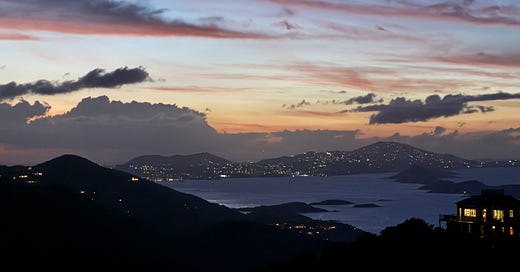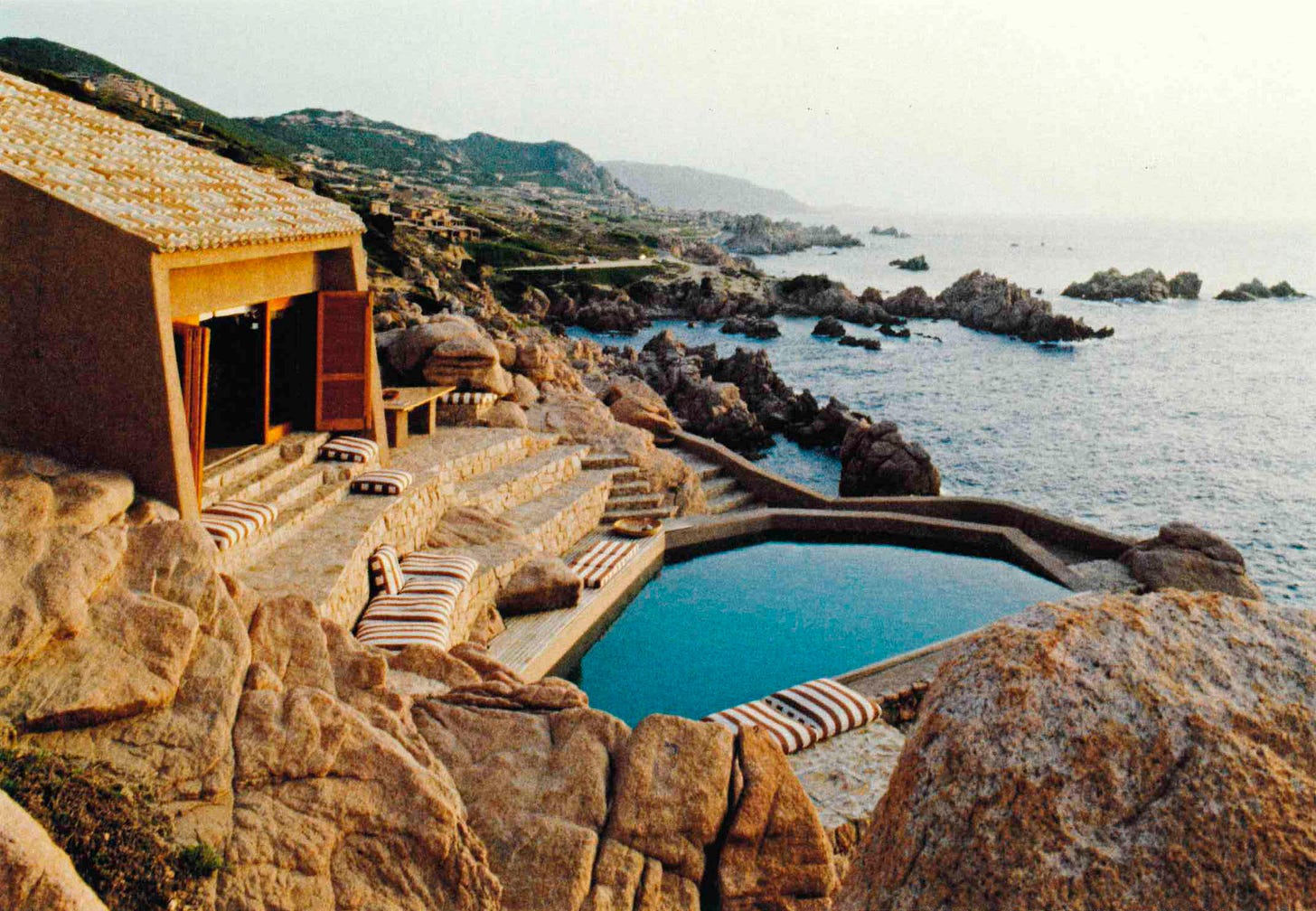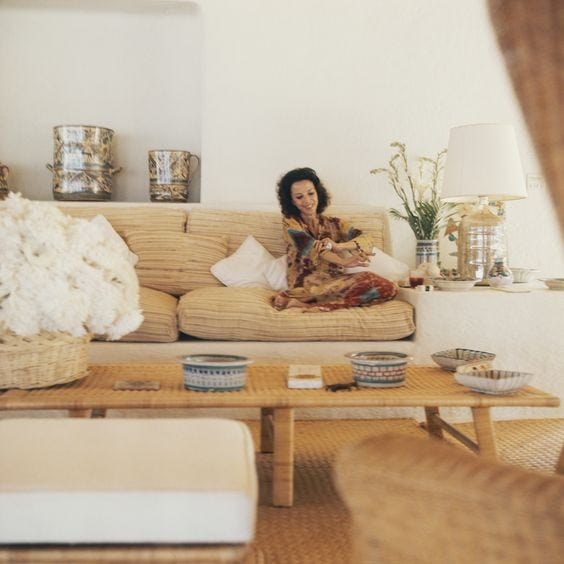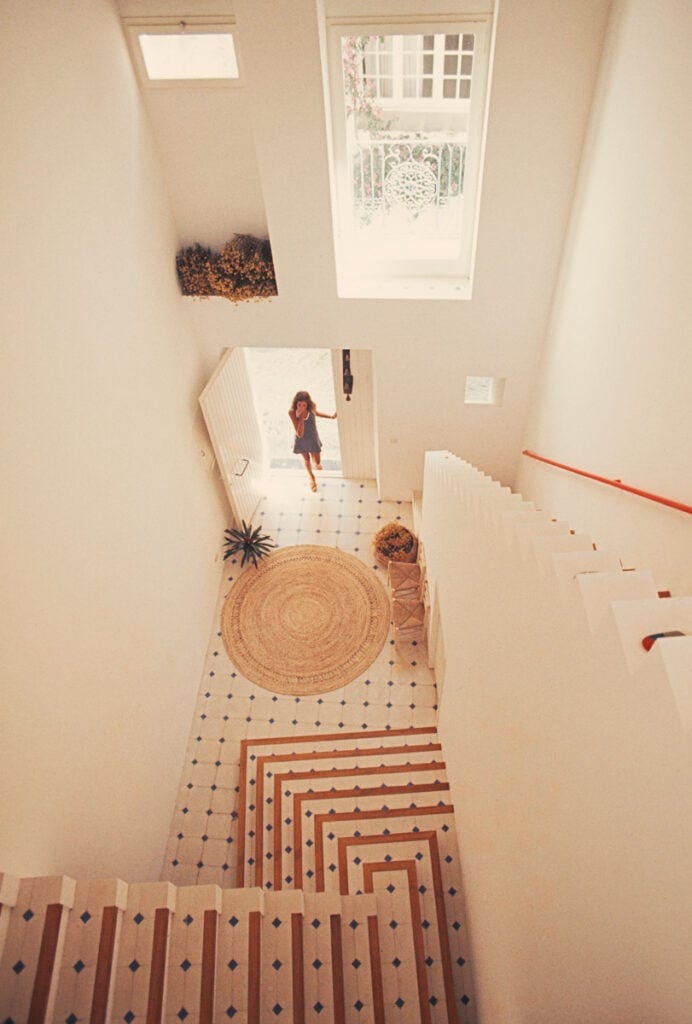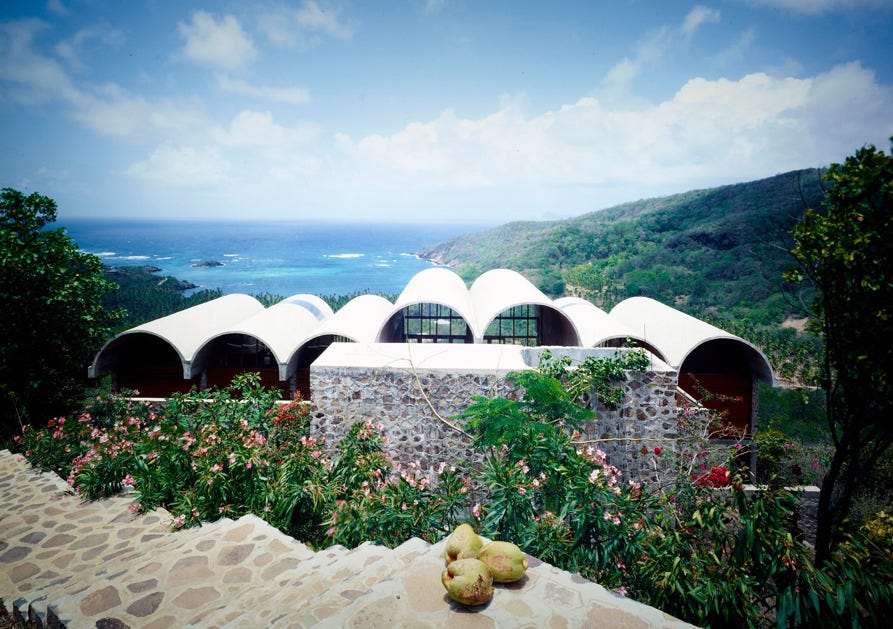A quick aside – I’m increasingly pleased that a few publications have allowed me to share my thoughts on gardens and gardening in the 21st century since you and I were last in touch. You can read my piece for Gardenista about examining the dogma of native gardens here, as well as a few of my thoughts about how we can build more resilient gardens in this great piece by Diana Budds for ArchDigest Pro.
Lastly, this month’s essay is best consumed while listening to Sateen’s newest single, which became a de facto soundtrack for the trip I’m writing about here and was absorbed into this piece in ways I’m only just now becoming aware of. Happy reading.
Tod makes the best drinks on the island. He is also classically handsome: high cheekbones, bronze skin, a lean, Paul-Newman-esque frame that’s topped with a head of curly auburn hair. But his eyes are wild – the kind of wild you see in a man who might propose after the first time you sleep together, or who would invite you for a day trip on his “boat” only to reveal that his vessel is a rusted-out dinghy where he spends most of his waking hours on Coinbase. There are too many potential eventualities to contend with, so you keep your head down and remain cordial in the dappled shade of the jungle that lingers just beyond the beach as wild goats and southern tourists bay in the background. When the time comes, you slip a crumpled 10 dollar bill into a plastic cup full of musty singles, give a quick nod in appreciation of his superlative cocktail skills, and shuffle back across the pockmarked asphalt road towards the beach before those eyes – so feral, so dazzlingly full of life – can lock you in their gaze.
The beach splays out here like one of the island’s native iguanas while sunbathing. Its crescent-shaped body is hugged at head and tail by steep, verdant hillsides that create the perfect geological conditions for a stadium-sized plateau in between that is home to fields of sea grass. Sea turtles come to graze on it in droves, roaming through its sinewy foliage as lobster-colored snorkelers hover overhead, oohing and aahing at the creatures’ loping gracefulness. The snorkelers’ activity has accrued over time, their very presence disturbing the sand below and contributing to the rapid expansion of the non-native sea grass species Halophila stipulacea, its olivine green altering the bay’s hue ever-so-slightly from what was once a more glaucous emerald. Surprisingly, the sea turtles do not seem to mind this shift and keep returning. So do the tourists, queuing at tiny shacks along the beach to rent goggles and fins from locals who are about as bothered as the turtles by the refracted changes below the surface.
If you follow the serpentine path of that same pockmarked road towards the beach’s easternmost bluff, you’ll find several catamarans moored below, idly bobbing in the waves as they kill time on long trips between Cruz Bay and Virgin Gorda. Some of the best coral reefs are found here, filled with otherworldly sea creatures in shades you didn’t know existed. Local legend says these are the ghosts of sugar plantation slaves who leaped to their deaths at this spot to avoid re-entrapment after one of the colonial slave revolts was quelled. The tour guides – invariably taking a semester off from college or searching for a warmer alternative to the sunny chill of ski resort life – will tell you this with the same amount of sympathy they use to speak about one of the island’s many hermit crabs who hurl themselves towards the ocean on a daily basis. It’s not because they view souls as if they were skipping stones. It’s because exodus and influx are commonplace here. In the absence of a marine biologist, there is just no other way to explain such vivid hues.
Tracking back along the north shore, you’ll pass Oppenheimer Beach, where the father of the atomic bomb eked out his final years in an ignominy that was at least partly self-prescribed, gazing at a horizon that improbably crept closer with each passing year. Eventually, you reach Caneel Bay, marking the original spot where Laurance Rockefeller gifted roughly 5,000 acres to the US government to create what is now The Virgin Islands National Park. They will tell you how he was one of the greatest conservationists of the 20th century and publicly deemed so by Lady Bird Johnson. They will not speak of the invariable tax benefits of donating so much land, or the half-dozen or so “RockResorts” that sprouted up afterwards, of which Caneel Bay was the crown jewel, or of the complexities of responsibly managing the impact of half a million yearly visitors on an island that is a little less than 20 square miles. It really puts the exception in American Exceptionalism.
Most locals will happily recount the many celebrities (like Harrison Ford!) that stayed at Caneel Bay in the 80s during the resort’s heyday. Walking its grounds, there’s a dusty somnambulance hanging over the whole place, a kind of hazy film that you’d expect to see more on La Cienega Boulevard than in the Caribbean. Much of the island feels like this, the buildings and restaurants and small business owners possessing that quality of someone who stayed too long at the party. It’s not difficult to see why, though. Close your eyes and the appeal is still there. Navigating the island’s central corridor by open-air Jeep at night, you can imagine yourself as some kind of ersatz Bianca Jagger: drunk on beauty because you’ve made a meal of it all day, careening dangerously close to hundred-foot cliffs covered in the most beautiful, poisonous plants, consumed by an animalistic recklessness that makes the thought of a staring contest with Tod seem tempting. The darkness of the jungle is a siren song, and the only consistent illumination comes from the island’s villas, lit up like little square lanterns perfectly chiseled into mounds of black velvet, the whole scene smothered underneath a twilight that shimmers like one of Ziggy Stardust’s signature suits.
On a recent night, in one of the handful of establishments that dot Coral Bay whose fried foods are directly at odds with the HIIT workouts and broth cleanses their patrons did just to feel comfortable here, a rusted transistor radio in the kitchen speaks of tiny particles of plastic that have become so ubiquitous they’re now found inside folds of the human brain. Staring out at the water, it’s easy to wonder which part is responsible for our anatomical buoyancy these days: the organic bits, or those that are manmade. It’s also hard to determine which is more foolish: to think that there was ever a world that was perfectly whole and untarnished, in which we ourselves could function as a complete and unadulterated unit, or the belief that there was anything we could do to keep it from changing, as if we were not Change ourselves – Nature and Man blissfully slurping at different ends of the same noodle like two clueless dogs on a romantic night, waiting for the moment our noses touch in oblivion or ecstasy, probably a mix of both.
Somehow, the body still floats.
P.S. HERE ARE SOME FUNKY 70s/80s BEACH HOUSES I LOVE FROM A FEW OTHER EXOTIC LOCATIONS I’D LIKE TO VISIT
Casa Scalesciani by Alberto Ponis
This beach house in Sardinia by legend Alberto Ponis feels like it was carved out of the rock formations it is nestled into. More about the design via Domus.
The Acapulco Getaway of Gloria Guinness
For some reason, Gloria Guinness didn’t make it into last year’s FX series about Truman Capote and his swans. Maybe that’s because she was too busy hanging at this tropical getaway to make it to La Côte Basque? More here.
Casa Chermayeff by Peter Harnden and Lanfranco Bombelli
This perennial favorite by the architect duo often has me wondering when/if weirdly formal vinyl flooring will ever make a comeback. More on this Cadaqués jewel via Apartamento.
Hill House by Ray D. Crites
There’s not much info about this property on Bequia Island, completed by Crites & McConnell in 1978, but it feels like it would be right at home on St John during its heyday. More images here.


